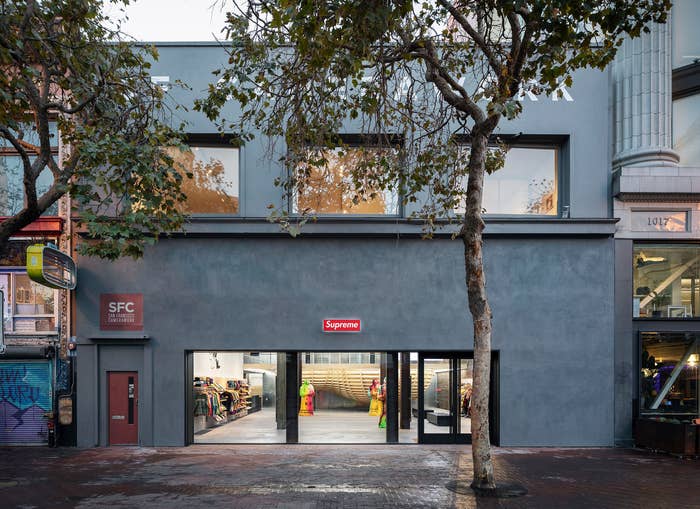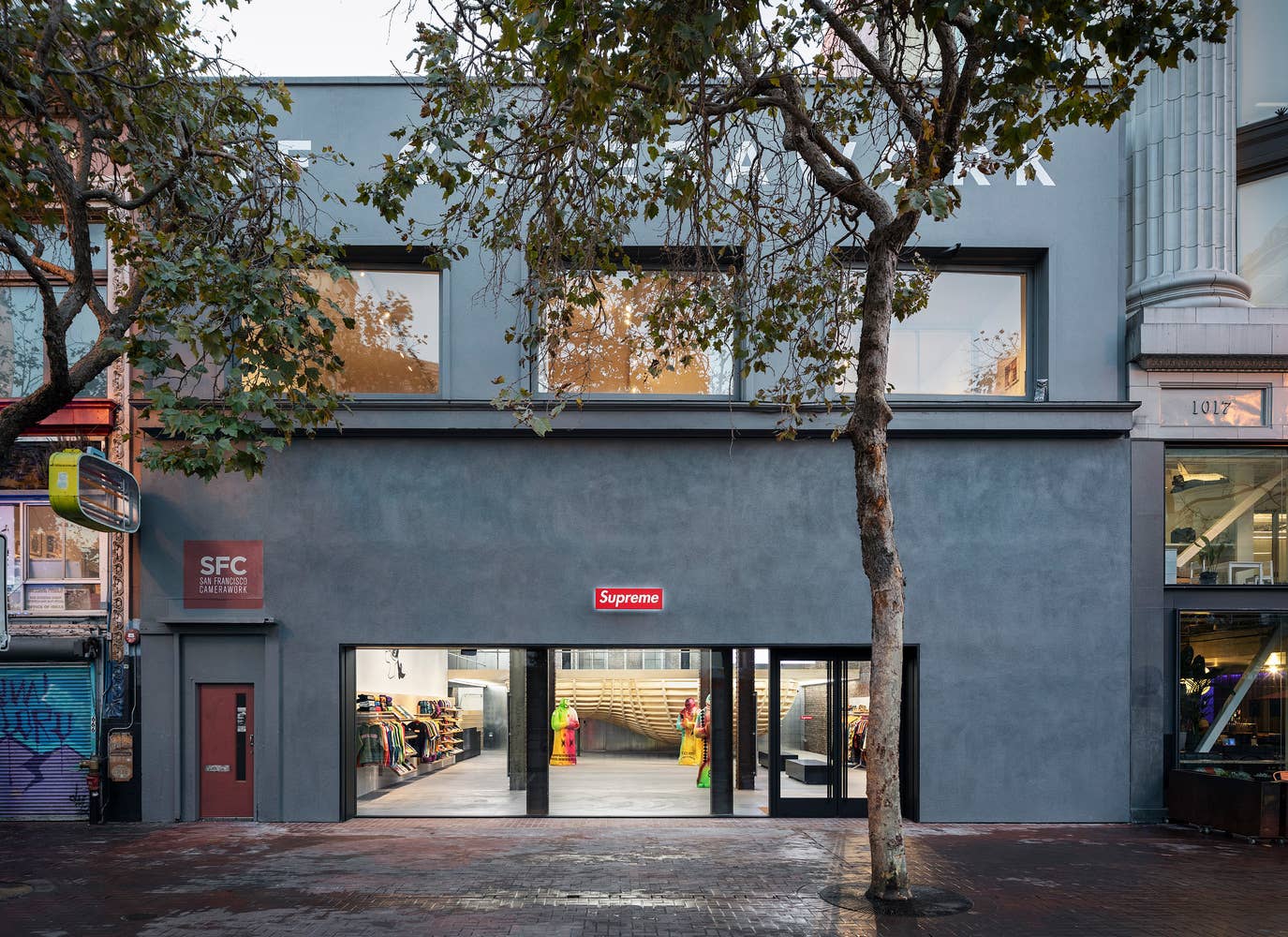
Market Street is a popular retail strip in downtown San Francisco—retailers like Levi's, Old Navy, and adidas are already located there—but the block where Supreme opened its store a couple weeks ago could be described as gritty.
Supreme is located in Mid-Market, a neighborhood that borders the infamous Tenderloin and has failed to attract commercial tenants due to high rates of crime, homelessness, and drug use nearby. Spotify, for example, received a tax break for moving its headquarters a block away from Supreme's current location, but broke its lease after five years because of safety concerns.
But San Francisco real estate agents say Supreme moving to the area could change this.
For Supreme OG’s, the move to Market Street symbolized a skate brand giving back to the city’s rich skateboarding culture. For others, it was seen as a move that further heightened the divide between San Francisco’s richest and poorest residents. But real estate agents think the brand’s move was a smart bet on a neighborhood that has historically struggled to attract retail even when big tech companies have established a strong presence there.
“Just seeing what I've seen in the short time that they've been open on that block is that it's just kind of tipped the scales in the complexion of the demographics of who's on that street,” said one San Francisco real estate broker, who wished to remain anonymous because he has three buildings on Market Street. “[Supreme moving to this area] is something that is actually being added to the marketing materials for the buildings I represent on that block. It's like ‘Look, if these guys are willing to locate here, you should locate your company here, too.’
Louis Cornejo, president of Urban Group Real Estate, a San Francisco commercial real estate brokerage, says Supreme moving onto that specific block of Mid-Market makes good business sense. By opening a store near the intersection of Market and North 6th St., the store likely found cheaper rent while still being located near popular tourist attractions like the Powell St. Cable Car.
“All those tourists who come to San Francisco, which are billions, are now a block away from the Supreme store,” says Cornejo. He believes Supreme moved two blocks away from big clothing retailers like adidas and Levi’s because it would save them a significant amount of money. It was probably the same reason why developers tried to jumpstart the 6x6 mall, a five-story, 250,000-square-foot mall that cost $150 million to build and is a block away from the new Supreme store. It’s failed to attract tenants within the past three years.
“Retail as a business, as an industry, relies on employees who want to work somewhere. If a young person is working in retail, especially working the hours that retail jobs entail, many of them want to work in an area that's safer,” says Cornejo when asked about opening retail in Mid-Market. “I think Supreme opening there is amazing because it’s a great brand that's well recognized and it may attract more people. But I think there's still not the critical mass that you need because retail relies on other retail. It's a good anchor, but they need more to complement it.”
Although Supreme has opened stores in neighborhoods with their own unique identities, the brand has shown that it can attract other retail as seen with the evolution of Fairfax Avenue in Los Angeles. However, even though San Francisco has improved Mid-Market’s economy by awarding tax break incentives to tech companies that moved into the area starting in 2011, the San Francisco Chronicle reported this year that the number of retailers in Mid-Market only grew by 3 percent. And even though the neighborhood hasn’t brought in many retailers, the Chronicle also reported that annual asking rents in the area have tripled from $26 per square foot in 2011 to $73 per square foot in 2018. Antonio Gamero, a Senior Sales and Leasing Associate at the San Francisco commercial real estate firm Starboard says retail spaces near Supreme are leasing for $3 a square foot.
Despite there being a gloomy cloud over Mid-Market’s retail sector, real estate professionals still think that Supreme made a good bet by moving onto that specific block. Four months after Supreme revealed it was opening a store in SF, developers ended up purchasing the empty 6x6 shopping mall, which could hint at more commercial activity in the neighborhood.
“Having a store like Supreme who would be sort of like a forerunner, or someone coming up to the ballpark on this situation [in Mid-Market],” says Gamero. “It helps to have them there.”

